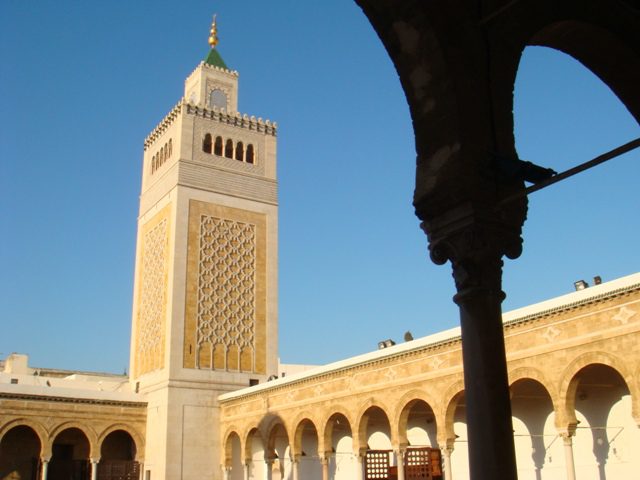
In the classes that I teach on Islam, Islamic history, and Islamicate civilization and culture, I typically use the divisions proposed by Marshall Hodgson in his great (uncompleted) three-volume work, The Venture of Islam. He objected to the “great man” method of periodizing Islamicate history (or, for that matter, any other history), and sought more fundamental turning points. So do I. For your (lack of) interest, his divisions (and, derivatively, mine) are as follows:
(Pre-Islamic Period, or, locally, the “Jahiliyya” [the “Age of Ignorance”] — to about AD 570)
Formative Period — from about AD 570 to 692
This period covers the life of Muhammad, who was born in or around the year AD 570, as also the lives of his contemporaries and those who first succeeded him as heads of the rising community.
High Caliphal Period — from about AD 692 to 945
In this period, the political ideal of absolute monarchy, taken from the Byzantine and, especially, from the Sassanian traditions, achieved its fullest expression.
Middle Periods — about AD 945 to 1500
** Early Middle Period — AD 945-1258
Following a time of social unrest, we have the Middle Periods. They are characterized by ephemeral and ever-shifting political boundaries, small states ruled by military figures. Nonetheless, this is a period in which the international civilization itself reached a full flowering, despite the political turmoil. (It is, in fact, tempting to say that the flowering occurred precisely because of the break-up into multiple and competing centers of patronage; for creators of science, philosophy, medicine, art, and literature, decentralization made the Islamicate world a sellers market.) The Early Middle Period is marked by Turkish invasion and overlordship.
** Late Middle Period — AD 1258-1500
The Late Middle Period is marked more by Mongol invasion and overlordship. A convenient date to recall in this context, which might (rather arbitrarily) be used to set off the Early from the Late Middle Period, is the Mongol destruction of Baghdad in 1258.
Period of the Gunpowder Empires — about AD 1500 to 1800
Technology from the West allowed for larger states and greater centralization. Three great empires dominate this period: 1) The Ottomans, ruling modern-day Turkey or Anatolia, Balkan Europe, and almost all of the Arab world. 2) The Safavids, ruling Iran. 3) The Moguls, ruling in the Indian subcontinent. This period is marked, too, by the expansion of the West, and by increased competition between it and the East.
Modern Period — AD 1800 to the glorious present
This period is usually counted from Napoleon’s invasion of Egypt — which, to be precise, occurred in 1798. It is a time in which the Islamic world has been forced to come to grips with the West, in various ways.
Posted from Seaside, Oregon












